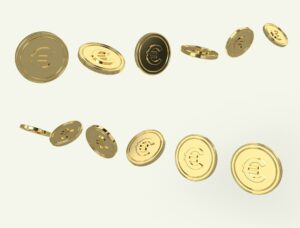The forex market is vast and dynamic, attracting a wide range of participants with various trading styles and strategies. Understanding the different types of forex traders can help you identify your own trading style and improve your chances of success in this highly competitive market. In this article, we will explore the different types of forex traders and help you determine which one you are.
1. Scalpers:
Scalpers are traders who aim to make small profits by taking advantage of short-term price movements. They enter and exit trades within minutes or even seconds, relying on high-frequency trading strategies and technical analysis indicators. Scalpers are known for their ability to quickly react to market changes and can execute multiple trades in a single day. They typically have a high win rate but rely on small gains to accumulate profits.
2. Day Traders:
Day traders are similar to scalpers, but they hold their positions for a longer period, typically closing all trades by the end of the trading day. They take advantage of intraday price fluctuations and often use technical analysis tools to identify entry and exit points. Day traders focus on specific currency pairs or market sectors, allowing them to become experts in their chosen area. They aim to capture larger price movements and generate profits from short-term market trends.
3. Swing Traders:
Swing traders hold their positions for a few days to several weeks, aiming to profit from medium-term price trends. They analyze both technical and fundamental factors to identify potential entry and exit points. Swing traders often use chart patterns, support and resistance levels, and trend lines to make trading decisions. They are more patient compared to scalpers and day traders, allowing them to capture larger price movements and potentially generate higher profits.
4. Position Traders:
Position traders have the longest time horizon among the different types of forex traders. They hold positions for weeks, months, or even years, aiming to profit from long-term market trends. Position traders often base their trading decisions on fundamental analysis, focusing on economic indicators, macroeconomic trends, and geopolitical events. They tend to have a higher tolerance for market fluctuations and are less concerned with short-term price movements.
5. Algorithmic Traders:
Algorithmic traders, also known as systematic traders, use computer programs or algorithms to execute trades automatically. They develop and backtest trading strategies based on specific criteria and indicators. Algorithmic traders often rely on technical analysis indicators and mathematical models to identify trading opportunities. They can trade multiple currency pairs simultaneously and execute trades with high speed and accuracy. Algorithmic trading requires advanced programming skills and knowledge of market dynamics.
6. Copy Traders:
Copy traders are a relatively new breed of forex traders who replicate the trades of successful traders. They join social trading platforms or copy trading services where they can follow and automatically copy the trades of experienced traders. Copy traders can choose from a wide range of traders based on their performance, risk tolerance, and trading style. This type of trading allows beginners to learn from experts and potentially earn profits without extensive market knowledge.
In conclusion, the forex market attracts different types of traders with varying trading styles and strategies. Understanding the different types of forex traders can help you identify your own trading style and improve your chances of success. Whether you are a scalper, day trader, swing trader, position trader, algorithmic trader, or copy trader, it is important to develop a trading plan, stick to it, and continuously adapt and refine your strategy based on market conditions.


